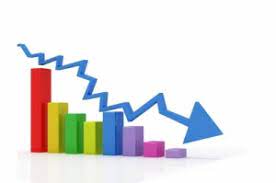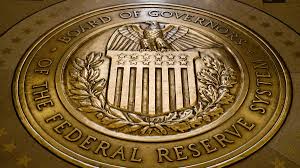Introduction
The U.S. economy witnessed a sharp and unexpected decline in retail sales in January 2025, marking the largest drop in nearly two years.
According to data from the Commerce Department, retail sales fell by 0.9% from December 2024, a much steeper decline than the projected 0.1%.
While December’s figures were revised upward to a 0.7% increase, the January downturn raised concerns about the resilience of consumer spending and its implications for the broader economy.
Several factors contributed to this decline, including severe winter weather, ongoing supply chain disruptions, and the lingering effects of wildfires in California.
In this article, we explore the causes of the sales decline, its impact on various sectors, and the potential future trajectory of the U.S. economy.
Factors Contributing to the Retail Sales Decline

1. Severe Winter Weather

One of the primary drivers of the downturn was the extreme winter weather that affected much of the country.
Record-breaking snowstorms and icy conditions in the Midwest and Northeast disrupted shopping patterns, keeping consumers at home.
Many brick-and-mortar retailers saw reduced foot traffic, while delivery delays impacted online sales. As a result, businesses reliant on in-person shopping suffered a significant blow.
2. Supply Chain Issues and Motor Vehicle Shortages

The automotive sector was one of the hardest hit, with dealerships reporting substantial declines in sales.
Persistent supply chain disruptions, particularly in semiconductor production, continued to limit vehicle inventories.
Many dealerships struggled to maintain stock, driving prices higher and discouraging potential buyers.
Additionally, financing costs remained elevated, further dampening demand for big-ticket purchases.
3. Impact of California Wildfires

The aftermath of devastating wildfires in regions like Los Angeles contributed to the economic slowdown.
Damage to infrastructure, displacement of residents, and business closures negatively affected retail activity in affected areas.
Supply chain disruptions resulting from the wildfires also contributed to increased costs and limited product availability in some markets.
4. Rising Prices and Consumer Uncertainty

Inflationary pressures remained a key concern for consumers.
Although inflation had moderated compared to the peak levels of 2023, rising costs for essential goods such as food, housing, and energy continued to strain household budgets.
Additionally, uncertainty surrounding new tariff policies created confusion and reduced consumer confidence.
Fears of further price increases led to more conservative spending behaviors among American households.
Sector-Specific Impact of the Decline
1. Auto Dealerships

As mentioned, the automotive sector was among the worst affected, with supply constraints and higher financing costs discouraging purchases.
Sales at auto dealerships dropped significantly, contributing to the overall retail decline.
2. Furniture and Home Goods

Retailers specializing in furniture and home goods also faced a notable decrease in sales.
High interest rates discouraged new home purchases and renovations, leading to lower demand for furniture and home improvement products.
3. Clothing Retailers

The apparel industry experienced a sharp decline as well, with both brick-and-mortar stores and e-commerce platforms reporting reduced sales.
Consumers appeared to prioritize essential purchases over discretionary spending, affecting fashion and luxury retail markets.
4. E-Commerce and Online Sales

While online shopping has traditionally been resilient, even e-commerce platforms saw a decline in January.
The combination of delivery disruptions due to winter storms and consumer caution led to weaker-than-expected online sales figures.
5. Food Services: A Bright Spot

One of the few sectors that continued to perform well was food services. Spending at restaurants and bars remained steady, reflecting a degree of financial stability among households.
Some analysts believe that consumers are prioritizing experiences over material goods, which could explain the divergence between dining and retail purchases.
Market and Economic Reactions
1. Impact on Treasury Yields and Government Debt

The surprising decline in retail sales triggered a rally in U.S. government debt, driving Treasury yields to one-week lows.
Investors reacted to the weak retail data by seeking safer assets, reflecting concerns about economic growth.
Lower yields often signal expectations of Federal Reserve intervention, potentially in the form of interest rate cuts.
2. Stock Market Performance

Despite the disappointing retail report, the stock market displayed mixed reactions.
The Dow Jones Industrial Average fell 0.4%, closing near session lows, while the Nasdaq Composite gained 0.4%, closing near the day’s highs.
The S&P 500 remained relatively unchanged, staying close to its record high.
These market movements suggest that while investors acknowledge the risks posed by declining consumer spending, they remain optimistic about other economic sectors.
3. GDP Growth Forecast Revisions

Following the weak retail sales report, economists revised their first-quarter GDP growth forecasts downward.
Consumer spending is a key driver of economic growth, and a prolonged slowdown could weigh on overall expansion.
Some analysts are now predicting that GDP growth for Q1 2025 could be below initial estimates, prompting speculation about potential Federal Reserve policy adjustments.
Future Outlook and Key Considerations
1. Potential for Federal Reserve Rate Cuts

The unexpected retail slump has fueled discussions about the possibility of interest rate cuts by the Federal Reserve.
If consumer spending continues to weaken, the Fed may intervene to support economic activity.
However, policymakers remain cautious about inflationary risks, and any rate adjustments will depend on future economic data.
2. Impact of Tariffs and Trade Policies

Another major uncertainty looming over the economy is the potential introduction of new tariffs, including retaliatory VAT measures.
These trade policies could further disrupt supply chains and push prices higher, exacerbating consumer uncertainty and potentially dampening spending further.
3. Will Consumer Spending Rebound?

While January’s data paints a concerning picture, some economists believe the downturn may be temporary.
Factors such as improving weather conditions, tax refunds boosting disposable income, and potential interest rate cuts could help support consumer spending in the coming months.
However, if economic headwinds persist, a longer-term slowdown could emerge.
Conclusion
The sharp decline in U.S. retail sales in January 2025 serves as a wake-up call for policymakers, businesses, and investors.
While factors such as winter weather, supply chain issues, and consumer uncertainty contributed to the downturn, the broader implications for economic growth remain uncertain.
Moving forward, market participants will closely monitor consumer confidence, inflation trends, and Federal Reserve actions to gauge the direction of the economy.
As challenges persist, maintaining a balanced approach to economic policy and consumer support will be essential to ensuring a stable recovery.